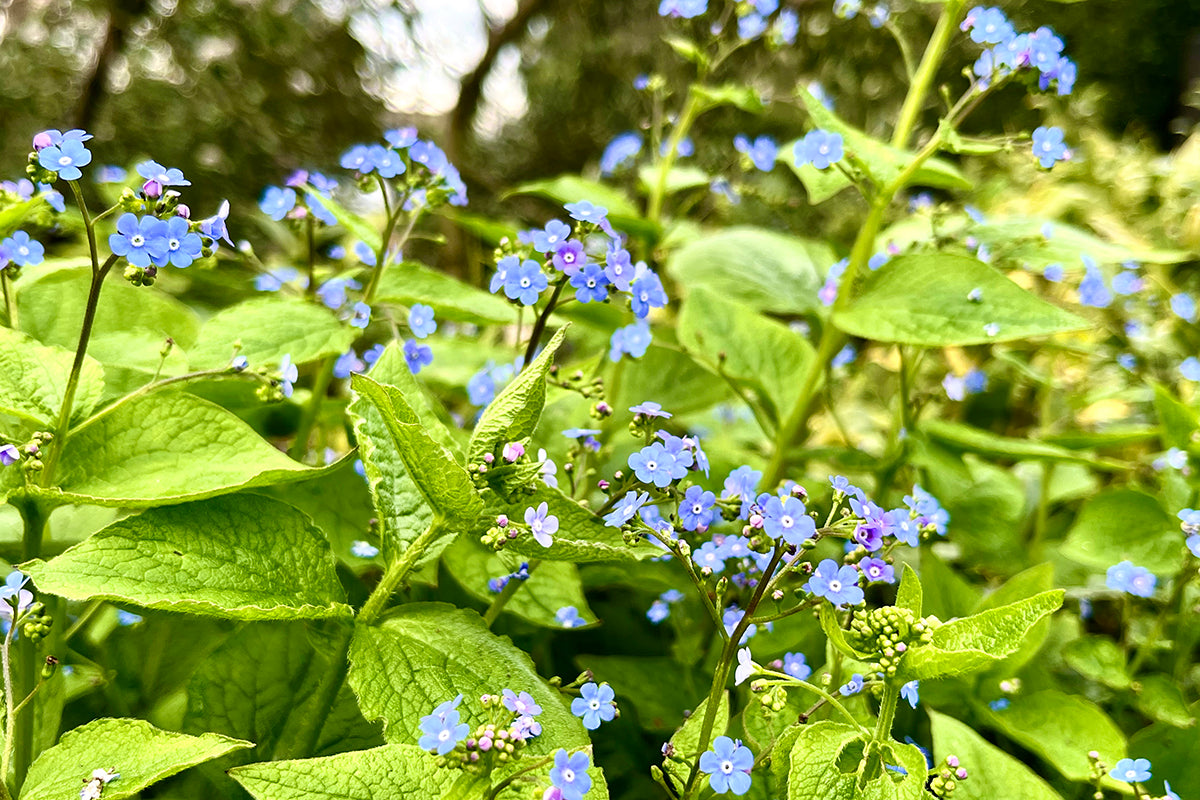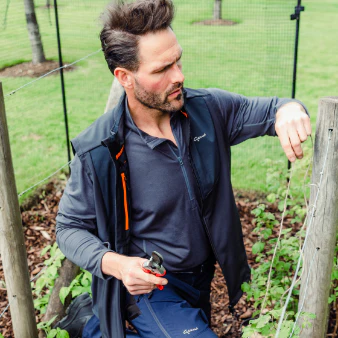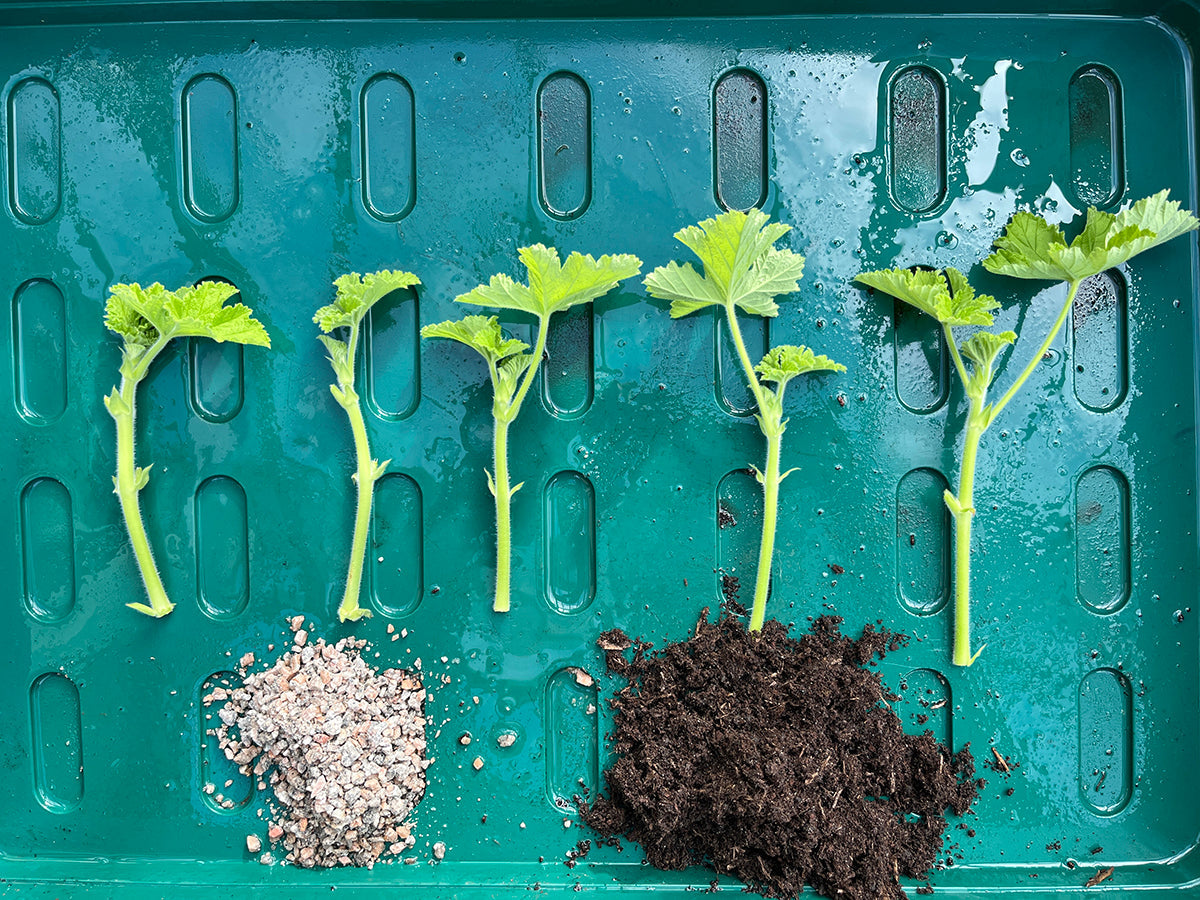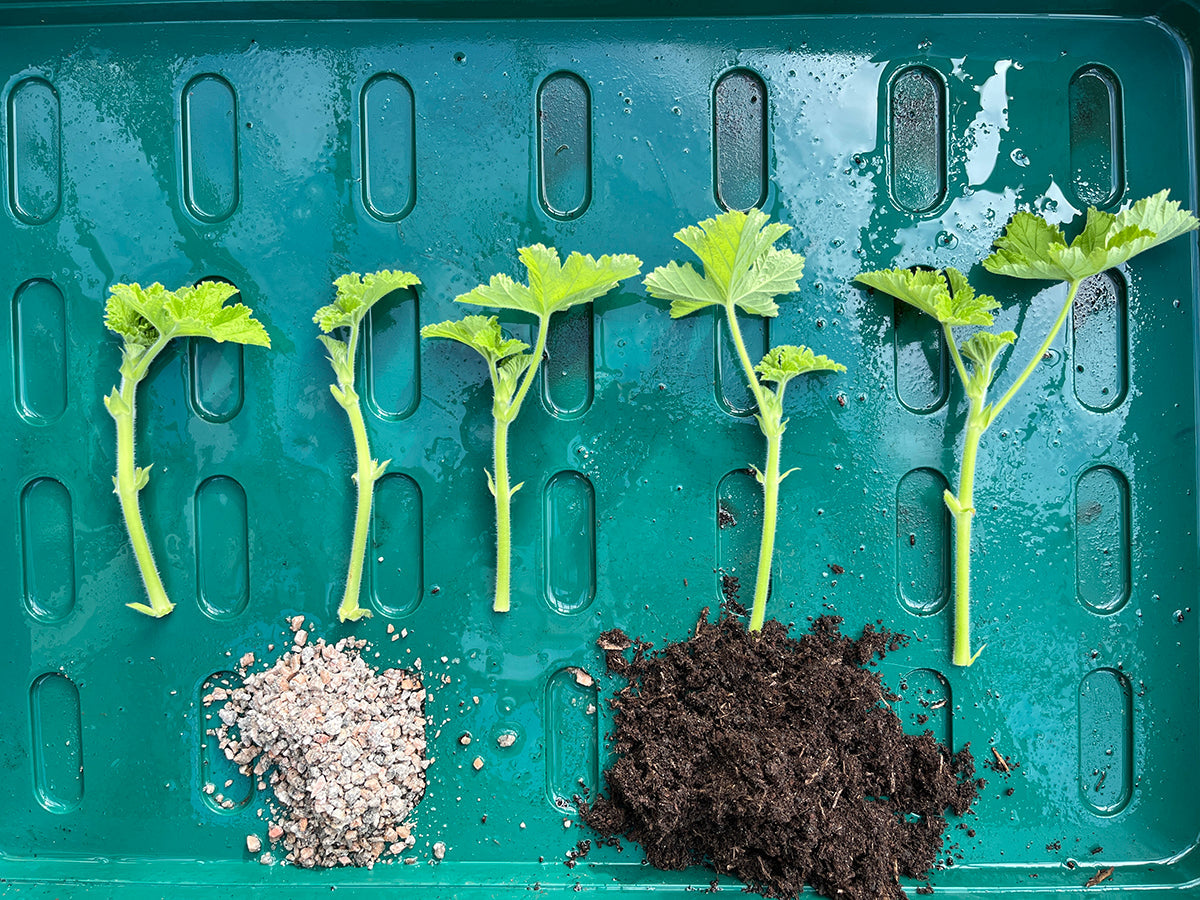Who knew? Blue

With the predominance of narcissi and tulips in the garden at this time of year and the multitude of colours they bring, it's always a surprise for us when the blues appear. Ompholodes ‘Cherry Ingram’(pictured), Brunnera ‘Jack Frost’, Bluebells, and Scilla - they all add a cool, calmness to an area.
Blue is rare in nature, true blue flowers are not merely uncommon - they’re nonexistent. Plants lack true blue pigment. When we perceive a flower as blue, it's due to a combination of other pigments and plant minerals interacting with light. A familiar example is cyanidin-3-glucoside, often sold as an antioxidant supplement. Many flowers labelled as ‘blue’ actually lean towards shades of purple, lavender, or a cool-toned red.
Psychologists refer to the calming influence of the colour and a perceived air of confidence and authority - it’s no coincidence that police uniforms are often blue. Up until the 1850’s blue as a dye or pigment was incredibly rare. During the Middle Ages, the colour was so expensive to produce from Lapis Lazuli - a semi-precious stone from Afghanistan - that its use was a sign of wealth and power. A cheaper alternative produced from the leaves of woad (Isatis tinctoria) was considered a poor relation, wasn’t colourfast, and was considered a colour for the masses.











